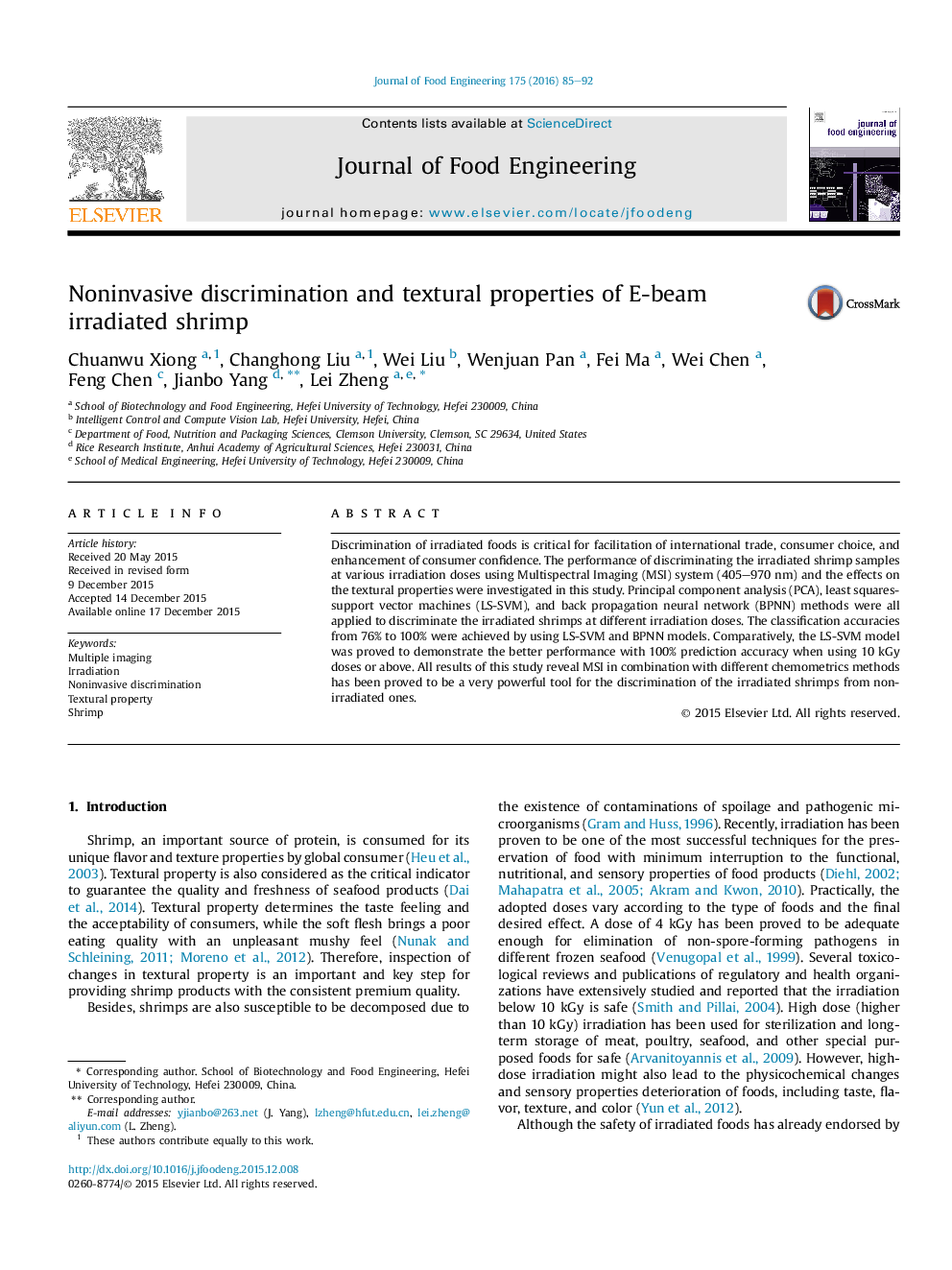| Article ID | Journal | Published Year | Pages | File Type |
|---|---|---|---|---|
| 222747 | Journal of Food Engineering | 2016 | 8 Pages |
•MSI technology was firstly used for the discrimination of irradiated foods.•Two prediction models based on LS-SVM and BPNN were established.•LS-SVM model was shown to have better calibration and prediction abilities.•MSI has been proved to be a powerful tool for irradiated shrimp discrimination.•E-beam irradiation up to 20 kGy caused no significant changes in textural property.
Discrimination of irradiated foods is critical for facilitation of international trade, consumer choice, and enhancement of consumer confidence. The performance of discriminating the irradiated shrimp samples at various irradiation doses using Multispectral Imaging (MSI) system (405–970 nm) and the effects on the textural properties were investigated in this study. Principal component analysis (PCA), least squares-support vector machines (LS-SVM), and back propagation neural network (BPNN) methods were all applied to discriminate the irradiated shrimps at different irradiation doses. The classification accuracies from 76% to 100% were achieved by using LS-SVM and BPNN models. Comparatively, the LS-SVM model was proved to demonstrate the better performance with 100% prediction accuracy when using 10 kGy doses or above. All results of this study reveal MSI in combination with different chemometrics methods has been proved to be a very powerful tool for the discrimination of the irradiated shrimps from non-irradiated ones.
